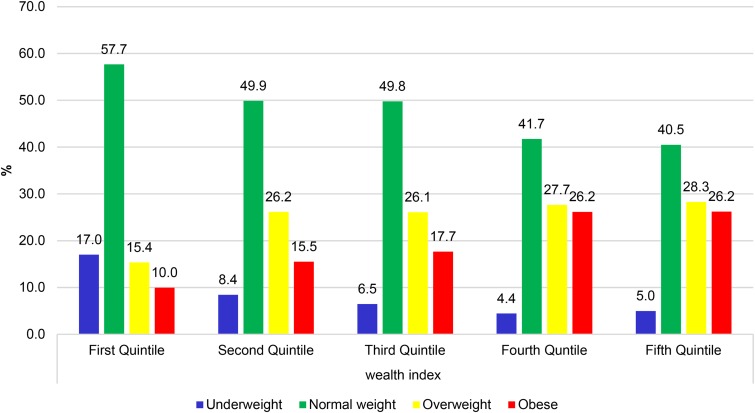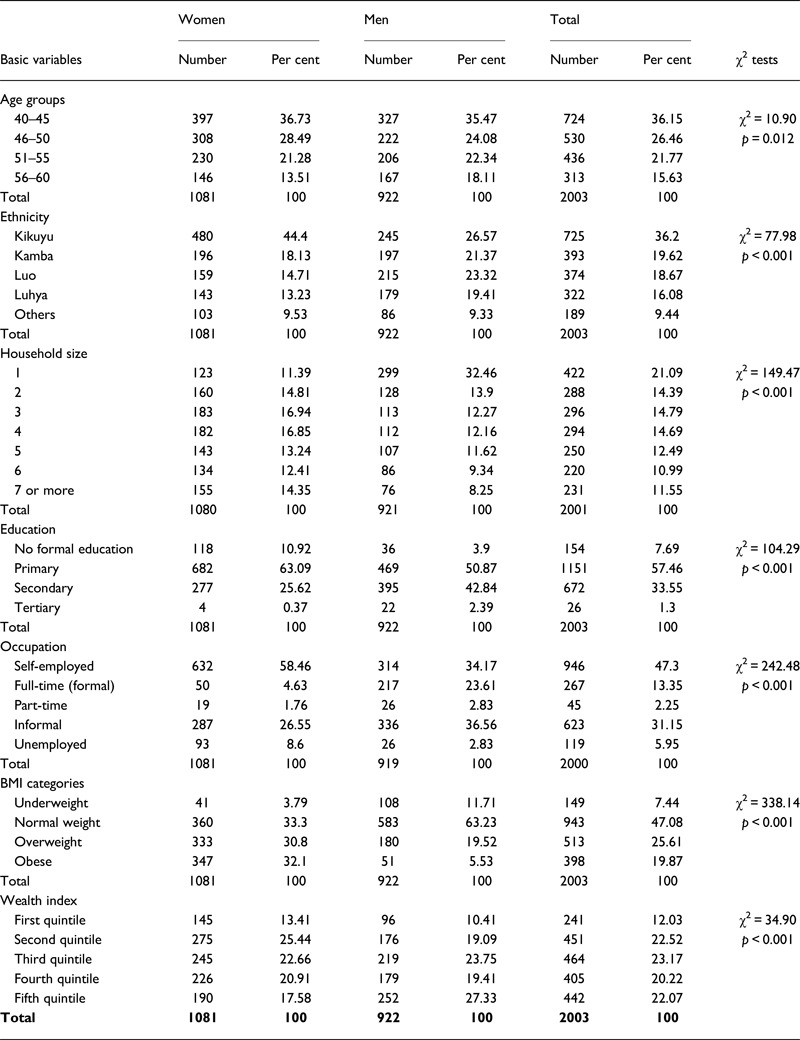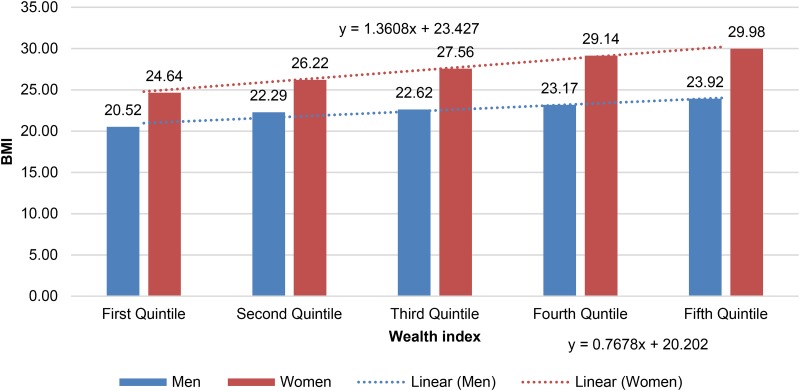体重指数和财富指数:内罗毕贫民窟健康和财富不平等的正相关指标。
IF 1.1
Q4 PUBLIC, ENVIRONMENTAL & OCCUPATIONAL HEALTH
Global Health Epidemiology and Genomics
Pub Date : 2018-06-04
eCollection Date: 2018-01-01
DOI:10.1017/gheg.2018.10
引用次数: 10
摘要
简介:财富指数是已知的身体质量指数(BMI)的预测指标。许多研究报告了BMI和社会经济地位(SES)之间的正相关。然而,缺乏对城市贫民窟环境中BMI与财富指数之间关系的深入研究。目的:研究肯尼亚内罗毕城市贫民窟BMI与财富指数之间的关系。方法:共纳入2003名40 ~ 60岁的成年人。BMI是通过直接测量体重和身高得出的。财富指数是使用家庭设施所有权的标准主成分分析来计算的。使用线性和逻辑回归模型评估BMI和财富指数之间的关系。结果:我们发现,在调整了潜在的混杂因素后,男性和女性的体重指数在财富指数的五个五分位数中呈线性增长。肥胖的患病率从第一财富五分之一的10%上升到第五财富五分之一的26.2%。女性的平均身体质量指数在财富状况的第二个五分之一或总人口的第三个五分之一处进入超重类别。结论:贫民窟居民身体质量指数与财富指数存在显著正相关关系。旨在减少肥胖的健康促进干预措施可考虑在确定优先事项时使用财富指数。本文章由计算机程序翻译,如有差异,请以英文原文为准。



Body mass index and wealth index: positively correlated indicators of health and wealth inequalities in Nairobi slums.
Introduction Wealth index is a known predictor of body mass index (BMI). Many studies have reported a positive association between BMI and socioeconomic status (SES). However, an in-depth investigation of the relationship between BMI and wealth index is lacking for urban slum settings. Objective To examine the association between BMI and wealth index in an urban slum setting in Nairobi, Kenya. Methods A total of 2003 adults between 40 and 60 years of age were included. BMI was derived from direct weight and height measurements. Wealth Index was computed using the standard principal component analysis of household amenities ownership. The relationship between BMI and wealth index was assessed using both linear and logistic regression models. Results We found that BMI linearly increased across the five quintiles of wealth index in both men and women, after adjusting for potential confounding factors. The prevalence of obesity increased from 10% in the first wealth quintile to 26.2% in the fifth wealth quintile. The average BMI for women entered the overweight category at the second quintile wealth status, or the third quintile for the total population. Conclusion There exists a strong positive relationship between BMI and wealth index in slum settings. Health promotion interventions aimed at reducing obesity may consider using wealth index in priority setting.
求助全文
通过发布文献求助,成功后即可免费获取论文全文。
去求助
来源期刊

Global Health Epidemiology and Genomics
PUBLIC, ENVIRONMENTAL & OCCUPATIONAL HEALTH-
CiteScore
1.40
自引率
0.00%
发文量
10
审稿时长
20 weeks
 求助内容:
求助内容: 应助结果提醒方式:
应助结果提醒方式:


